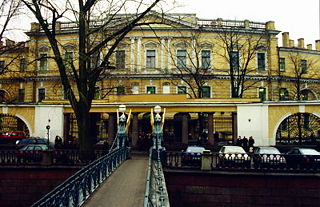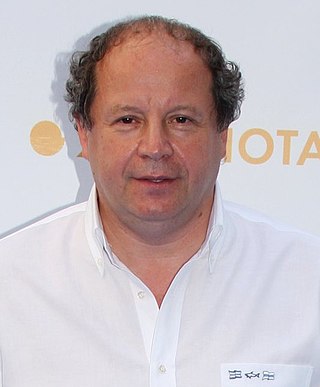| |||||
| Decades: | |||||
|---|---|---|---|---|---|
| See also: | |||||
Events from the year 1886 in Russia .
| |||||
| Decades: | |||||
|---|---|---|---|---|---|
| See also: | |||||
Events from the year 1886 in Russia .
| | This section needs expansion. You can help by adding to it. (July 2016) |
| | This section needs expansion. You can help by adding to it. (July 2016) |

Vladimir Ivanovich Vernadsky, also spelt Volodymyr Ivanovych Vernadsky was a Russian, Ukrainian, and Soviet mineralogist and geochemist who is considered one of the founders of geochemistry, biogeochemistry, and radiogeology. He was one of the founders and the first president of the Ukrainian Academy of Sciences. Vladimir Vernadsky is most noted for his 1926 book The Biosphere in which he inadvertently worked to popularize Eduard Suess' 1875 term biosphere, by hypothesizing that life is the geological force that shapes the earth. In 1943 he was awarded the Stalin Prize. Vernadsky's portrait is depicted on the Ukrainian ₴1,000 hryvnia banknote.

Dmitri Ivanovich Mendeleev was a Russian chemist and inventor. He is best known for formulating the Periodic Law and creating a version of the periodic table of elements. He used the Periodic Law not only to correct the then-accepted properties of some known elements, such as the valence and atomic weight of uranium, but also to predict the properties of three elements that were yet to be discovered.
Mikhail Lomonosov was a Russian polymath, scientist and writer.

Alexander Stepanovich Popov was a Russian physicist, who was one of the first persons to invent a radio receiving device.
Constantin Dmitrievich Perskyi was a scientist from the Russian Empire who is credited with coining the word television (télévision) in a paper that he presented in French at the 1st International Congress of Electricity, which ran from 18 to 25 August 1900 during the International World Fair in Paris. At the time, he was Professor of Electricity at the Artillery Academy of Saint Petersburg. His paper referred to the work of other experimenters in the field, including Paul Gottlieb Nipkow and Porfiry Ivanovich Bakhmetiev, who were attempting to use the photoelectric properties of selenium as the basis for their research in the field of image transmission.

Saint Petersburg State University of Economics and Finance was a public university in Saint Petersburg, Russia. It was established in 1930 as Leningrad Institute of Finance and Economics. In 2012, it united with Saint Petersburg State University of Service and Economics and Saint Petersburg State University of Engineering and Economics to create Saint Petersburg State University of Economics. The campus of the University occupied the buildings of the former Russian Assignation Bank.

Saint Petersburg has always been known for its high-quality cultural life, and its best known museum is the Hermitage.

Saint Petersburg Electrotechnical University "LETI" is a public university. It was founded in 1886 as a Technical College. LETI, as it is popularly called, received the status of a higher education institution in 1899 and became known as Electrotechnical Institute. The University has programs in fields of radio engineering, telecommunications, control processes, computer engineering and IT, electronics, biomedical engineering, management, and linguistics.

Aptekarsky Island is a relatively small island situated in the northern part of the Neva delta. It is separated from Petrogradsky Island by the Karpovka River, from Kamenny Island and Krestovsky Island by the Malaya Nevka and from the Vyborgskaya region of St-Petersburg by the Bolshaya Nevka. It has an area of approximately two square kilometres.

Ludwig Minkus, also known as Léon Fyodorovich Minkus, was an Austrian composer of ballet music, a violinist and teacher of music.

Vladislav Alexandrovich Ivanov was a Soviet physicist and engineer, who proposed in 1959 the basic principles of magnetic resonance imaging, decades before this technique was demonstrated by Paul Lauterbur.

George de Bothezat was a Romanian-Russian American engineer, businessman, and pioneer of helicopter flight.
Sergey Vladimirovich Fomin is a Russian American mathematician who has made important contributions in combinatorics and its relations with algebra, geometry, and representation theory. Together with Andrei Zelevinsky, he introduced cluster algebras.

Ivan Ivanovich Borgman was a physicist from the Russian Empire, who first demonstrated in 1897 that X-rays and radioactive materials induced thermoluminescence.

Vladìmir Anísimoff is a Russian composer, scientist-physicist, philosopher-agnostic, writer, and philanthropist. He is a grandnephew of the revolutionary-menshevik Vasily Anisimoff and a grandnephew of the famous Soviet pedagogue Pyotr Afanasiev, who created the most popular in the young Soviet Russia ABC book in Russian language "Read, write, count" and the Russian language Textbook for primary school. Vladìmir Anísimoff is famous as a scientist in the field of magnetic resonance. He developed a method for the study of hidden internal surfaces, as well as he worked in the field of magnetic resonance imaging, in particular, in the study of membranes. He is also known as the author of rare duration and depth of the content of the Symphony "FrognerPark". This Symphony is similar to sculptural FrognerPark of Gustav Vigeland in Oslo and reflects a full range of feelings and emotions of a person during his life. "Unicum Organum" is his fundamental philosophical work in the understanding of human life as a continuous process of information processing by chemical processors of brain.

Yury Yurievich Boldyrev is a Russian economist and politician, he was a Senator from St. Petersburg from 1993 to 1995, and Deputy Chairman of the Accounts Chamber of Russia from 1995 to 2001. Boldyrev was one of the founders of the Yabloko party, but left in 1995.

Dmitry Hananovich Astrakhan is a Russian film director and actor. Honored Artist of the Russian Federation (2009).
Boris Innokentievich Zubarev was a Russian physicist. Professor, Doctor of Physical and Mathematical Sciences.
![]() Media related to 1886 in Russia at Wikimedia Commons
Media related to 1886 in Russia at Wikimedia Commons